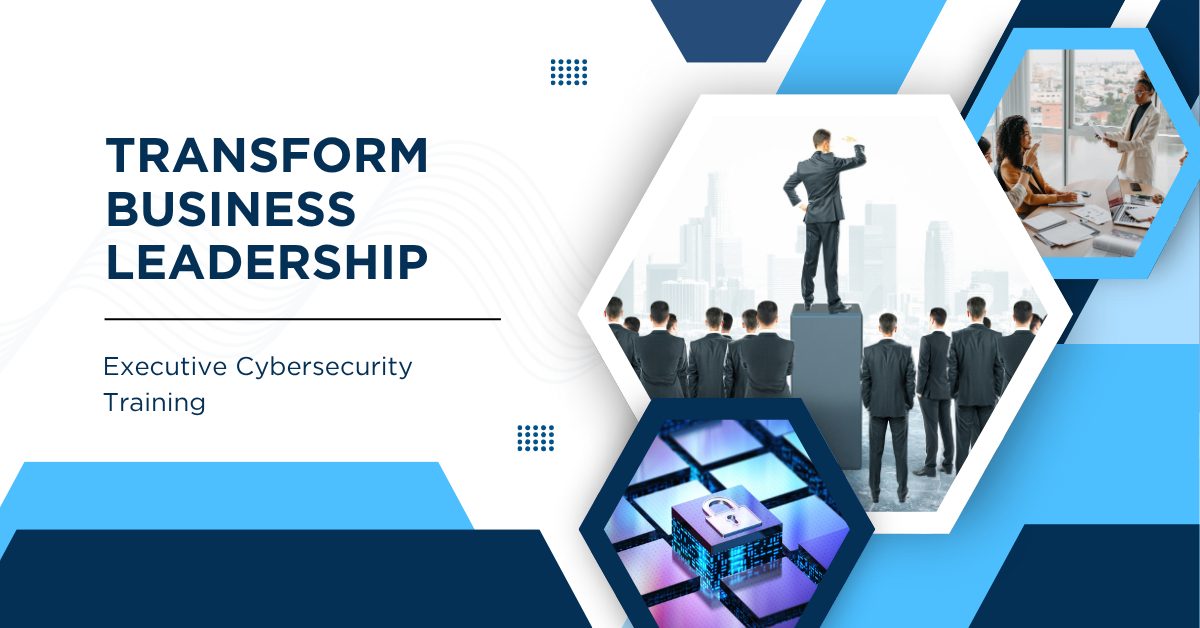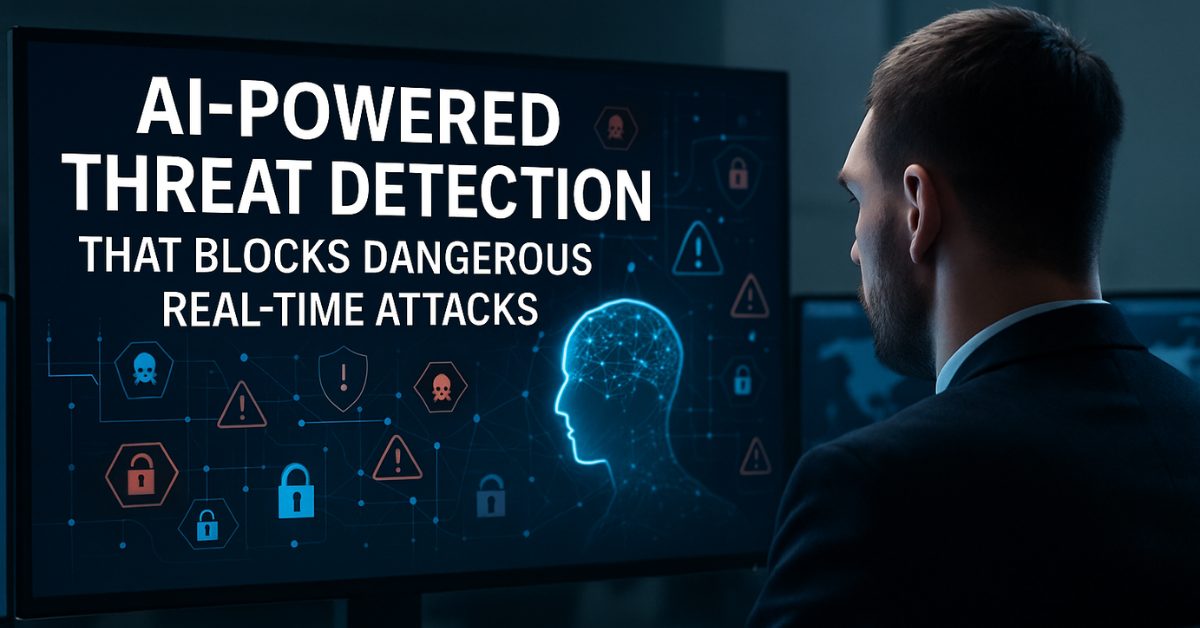Why Every Executive Must Prioritize Employee Training for Cyber Security
As cyberattacks become more sophisticated and relentless, employee training for cyber security is no longer optional—it’s a strategic necessity. Executives across industries are realizing that cybersecurity isn’t just about having the latest tools or software; it’s about creating a workforce that is aware, alert, and capable of making secure decisions every day.
This is where executive cyber security training plays a crucial role. When leadership understands the risks and actively champions awareness, the entire organization benefits. A well-trained team becomes the first line of defense, significantly reducing risks like phishing scams, weak passwords, and data mishandling.
At Gallop Technology Group, we empower companies with robust cybersecurity services that help businesses protect sensitive data, maintain compliance, and prevent breaches before they happen. While Gallop does not offer direct cybersecurity training modules, our services and expert webinars often cover essential cybersecurity awareness topics that help leaders and teams understand practical ways to secure their digital environments.
The Leadership Imperative: Building a Security-Conscious Culture
Effective cybersecurity starts with leadership. CIOs, CTOs, and IT Directors must go beyond policy enforcement—they must foster a culture where every employee feels responsible for protecting digital assets. This cultural shift begins with understanding how cyber security training for staff fits into the bigger picture of business continuity and trust.
When leaders prioritize awareness and encourage accountability, cybersecurity becomes part of the company’s DNA. Employees begin to recognize potential threats, avoid risky behaviors, and contribute to a stronger, more resilient organization.
The Strategic Role of Executives in Cybersecurity Training
Defining Leadership in a Threat-Driven Landscape
Chief Information Officers (CIOs), Chief Technical Officers (CTOs), and IT Directors each play a unique role in the cybersecurity ecosystem. The CIO drives the company’s overall IT strategy and ensures compliance with security regulations. The CTO focuses on technology innovation and system resilience, while the IT Director manages operations and ensures that every team member adheres to best practices.
By aligning these roles under a shared vision of executive cyber security training, leaders can build a unified and secure environment. Training at the executive level strengthens leadership judgment, improves incident response, and enables smarter investments in cybersecurity infrastructure.
Turning Human Error into Human Strength
Human error remains one of the biggest vulnerabilities in cybersecurity. Whether it’s a staff member clicking a phishing link or reusing weak passwords, small mistakes can lead to massive breaches. But with consistent employee training for cyber security, these vulnerabilities can become areas of strength.
When employees understand how to identify threats and follow security protocols, they become a powerful barrier against attacks. For executives, it’s essential to promote online cyber security training for employees that is engaging, easy to access, and relevant to their daily work. The more relatable and practical the training, the better the adoption rate.
Building Engagement Through Relevance and Recognition
One of the reasons cybersecurity programs fail is that employees see them as irrelevant or boring. To overcome this, leaders should ensure that cyber security training for staff is tailored to their specific roles. For instance, accounting teams can focus on recognizing phishing emails tied to financial data, while the IT department can explore advanced data protection protocols.
Recognizing progress is also key. Incentives such as completion badges, shoutouts, or certificates can boost participation rates. When employees see that leadership values their security awareness, engagement levels rise.
Creating an Effective Cybersecurity Training Framework
1. Tailor the Content to Roles and Risks
A one-size-fits-all training approach doesn’t work. Executives should oversee customized cybersecurity awareness modules that fit the organization’s structure. For example:
- Frontline employees can learn about social engineering and password management.
- Managers can focus on data protection and compliance.
- Executives can study governance, risk management, and leadership accountability.
Partnering with a trusted cybersecurity service provider like Gallop Technology Group can help ensure that each level of your organization is supported by strong defensive strategies.
2. Make Learning Engaging Through Interaction
Interactive training captures attention and improves retention. Instead of relying solely on slide-based presentations, consider:
- Simulated phishing attacks to test readiness.
- Gamified challenges that reward correct answers.
- Short, mobile-friendly lessons that reinforce critical topics.
Even though Gallop doesn’t provide direct training modules, our team helps clients build cyber-resilient environments that make employee engagement and accountability easier to maintain.
3. Integrate Continuous Learning
Cybersecurity isn’t static—it evolves constantly. Executives should ensure that online cyber security training for employees is updated regularly to reflect new threats such as ransomware, AI-driven phishing, and credential theft.
Establish quarterly learning refreshers or brief internal webinars to keep everyone sharp. Gallop Technology Group can support your company’s IT leaders with up-to-date insights, system hardening strategies, and cyber hygiene improvements that align with emerging risks.
Measuring Cybersecurity Training Effectiveness
Collect and Analyze Feedback
Executives should gather feedback after every cybersecurity awareness session to measure effectiveness. Employee surveys, quizzes, or internal reports can highlight where additional guidance is needed.
If teams consistently miss key security concepts, it may indicate the need for more personalized reinforcement or better communication strategies.
Track Metrics That Matter
Track key performance indicators (KPIs) such as phishing simulation success rates, password compliance, and data-sharing behaviors. These metrics show tangible progress and can be used to motivate departments to perform better.
Involving Gallop Technology Group’s cybersecurity team can help establish clear measurement frameworks, ensuring your business’s training initiatives align with your IT goals.
Case Study: The Power of Executive Commitment
A global manufacturing firm struggled with repeated data breaches due to careless employee actions. Their CIO introduced a company-wide cyber security training for staff initiative, while the CTO implemented secure automation tools to monitor internal activity. The IT Director complemented these steps by rewarding departments that achieved full compliance.
Within six months, phishing click rates dropped by 73%, and employee-reported security incidents increased threefold. This shift wasn’t due to new software—it came from leadership-driven engagement, accountability, and consistent employee training for cyber security.
When executives actively participate in awareness efforts, they inspire their teams to treat security as everyone’s job, not just IT’s responsibility.

Fostering a Positive and Inclusive Security Culture
Encourage Open Dialogue
Employees should feel comfortable reporting suspicious activity or mistakes without fear of punishment. Open communication fosters trust, which strengthens your cybersecurity posture.
Executives should remind teams that everyone, from interns to C-level leaders, shares responsibility in maintaining secure operations.
Recognize and Reward Awareness
Publicly celebrating employees who demonstrate cybersecurity excellence reinforces the message that security is valued at every level. Recognition builds pride and consistency—two essential elements in a strong cybersecurity culture.
Technology as an Enabler of Cybersecurity Learning
Modern technology offers more flexible ways to deliver awareness programs. Through digital platforms and online modules, online cyber security training for employees can be delivered anywhere, anytime.
Using technology also allows for analytics-driven insights—helping leaders identify weak spots and adjust strategies faster. CIOs and CTOs should leverage modern platforms that offer tracking dashboards, interactive simulations, and AI-driven feedback to make learning adaptive and measurable.
Gallop Technology Group integrates such technologies into its cybersecurity service offerings, helping organizations fortify their systems, prevent intrusions, and maintain compliance with industry regulations.
Leadership Is the Ultimate Cyber Defense
Executive cyber security training isn’t just a checkbox activity—it’s the foundation of secure, forward-thinking leadership. When CIOs, CTOs, and IT Directors take ownership of their company’s cybersecurity culture, they set an example that drives lasting change.
While Gallop Technology Group does not provide formal cybersecurity training, we deliver advanced cybersecurity services that help companies secure their data, monitor vulnerabilities, and implement proactive protection strategies. Through our expert-led webinars and ongoing support, we help executives understand the “why” behind cybersecurity and empower them to make smarter technology decisions.
Partner with us today to strengthen your defenses, engage your workforce, and ensure your organization’s cybersecurity strategy is future-ready. Call our team at 480-614-4227 to learn more and get free IT assessment.
Source:
- National Institute of Standards and Technology (NIST) – Cybersecurity Framework
https://www.nist.gov/cyberframework







